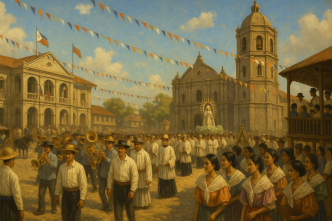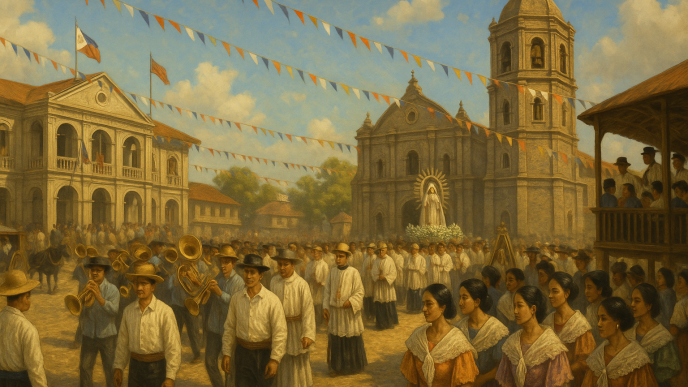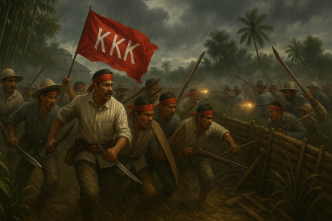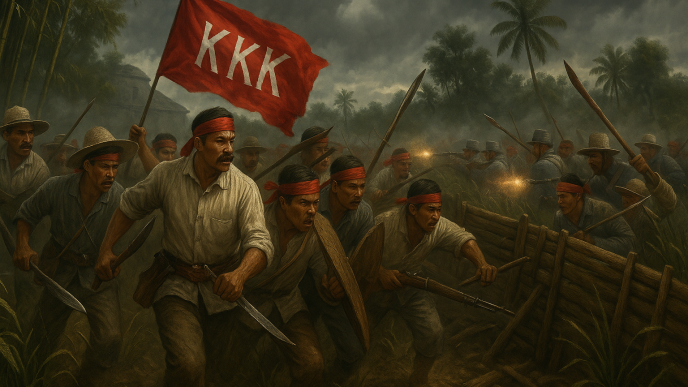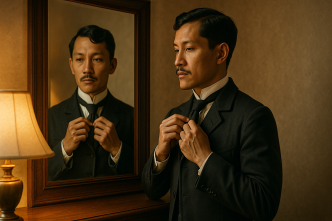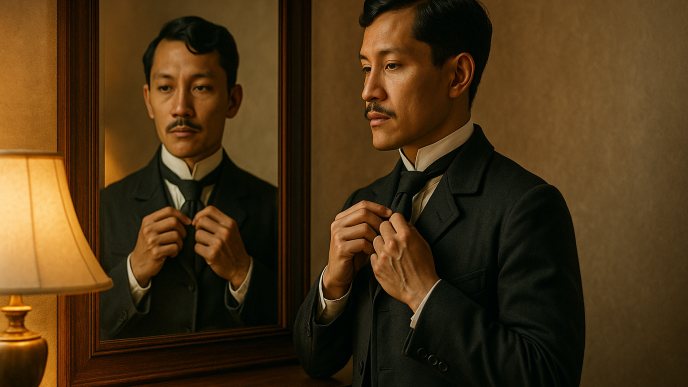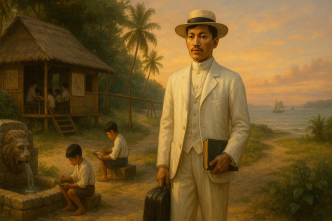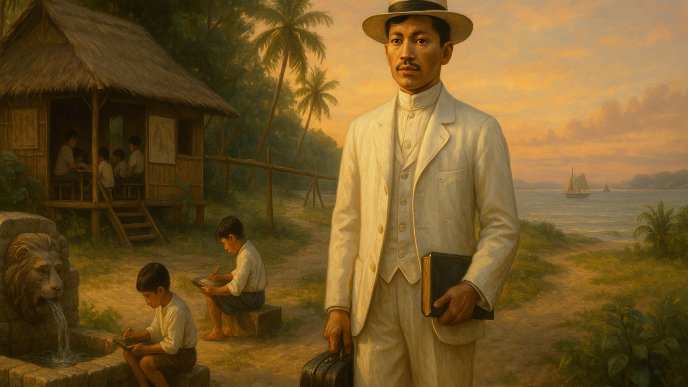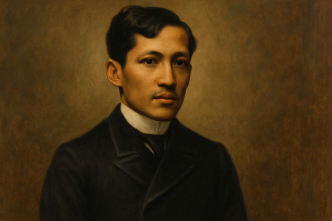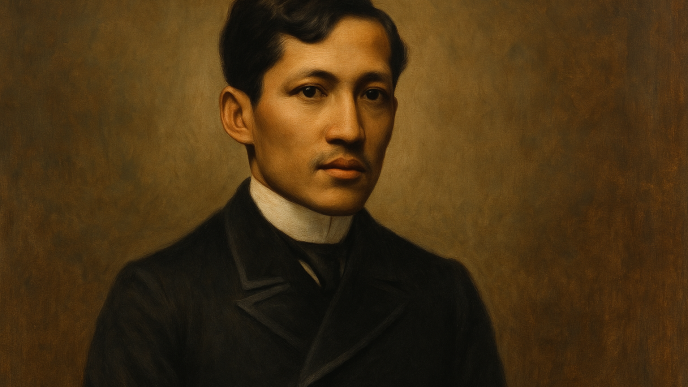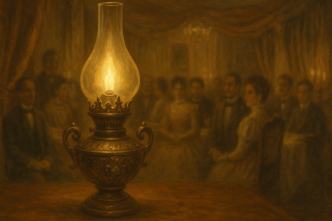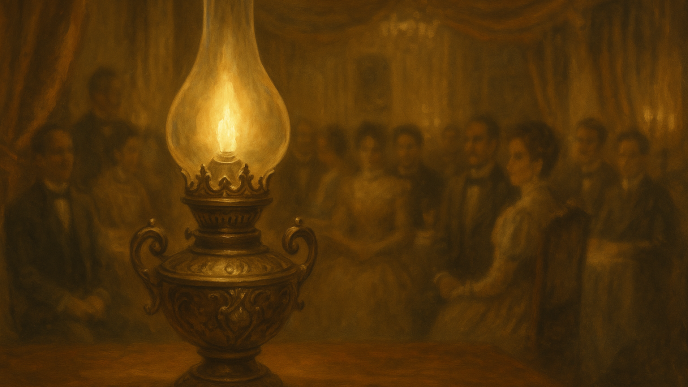When José Rizal was born in 1861, the Philippines had been under Spanish rule for nearly three centuries. By then, the colonial system had evolved into a complex hierarchy that blended rigid political control, religious authority, and economic dependency. The archipelago was governed not as a unified nation but as a distant extension of Spain’s empire — a colony whose people were expected to obey without question, serve without reward, and believe without doubt.
A Centralized and Theocratic Government
The Spanish colonial government was an absolute monarchy in practice, with the King of Spain regarded as the ultimate source of authority. However, the king’s power was exercised through the Governor-General, who acted as both the head of the civil administration and the commander-in-chief of the armed forces in the Philippines. His power was vast, nearly unchecked, and susceptible to abuse. He could implement laws, levy taxes, exile dissidents, and even suspend rights — often without consultation or oversight from Madrid, given the distance and delay in communication.
Below the Governor-General were provincial and local officials. Alcaldes mayores governed provinces, while gobernadorcillos administered towns. At the village level, the cabeza de barangay collected taxes and maintained peace and order. Though these positions were theoretically elective, in practice they favored the wealthy and those close to the friars or colonial authorities. This created a small class of local elites — the principalia — who became intermediaries between Spanish officials and the native population. Over time, this system entrenched class divisions and perpetuated inequality.
The Church’s authority was even more pervasive. The Philippines was not only a political colony but a spiritual one. The friars — members of religious orders such as the Dominicans, Augustinians, Franciscans, and Recollects — held immense power, often greater than that of civil officials. They controlled education, censored the press, oversaw parishes, and supervised local appointments. They also had the power to excommunicate individuals who challenged their rule, giving their authority a divine veneer that discouraged resistance.
The Role of the Friars and Religious Orders
By the nineteenth century, the frailocracy, as it was often called, had become one of the most defining features of Spanish rule. The friars were not merely spiritual shepherds; they were political arbiters, landowners, and social overseers. They controlled vast estates known as haciendas, acquired through donations, purchases, and coercion. The revenues from these lands enriched the orders while the native tenants remained poor and indebted.
The Church also maintained control over the education system. Schools taught obedience, religion, and basic literacy — but not critical thinking or scientific inquiry. Higher education was reserved for the privileged few, often those who showed loyalty to Church and Crown. The University of Santo Tomas, run by Dominicans, was the intellectual center of the colony but served mainly to reinforce orthodox Catholic doctrine rather than promote progress or reform.
For reform-minded Filipinos like Rizal, the friars symbolized both the hypocrisy and stagnation of colonial rule. They preached humility but lived in privilege, claimed to serve God but often exploited the people. Their intrusion into secular affairs — from marriage to land disputes — turned them into arbiters of daily life. The confessional box, where one sought forgiveness, also became a channel for surveillance and control.
Economic Control and the Galleon Legacy
Economically, the Philippines remained dependent on Spain, serving primarily as a source of raw materials and a market for European goods. The colonial economy had long revolved around the Galleon Trade (1565–1815), which connected Manila and Acapulco in Mexico. Although it brought wealth to certain merchants, it stifled local industry and kept the colony tied to foreign interests. When the trade ended in the early 19th century, new economic policies opened Philippine ports to world commerce, but the benefits were uneven.
Large estates remained in the hands of religious orders and a handful of Spanish families. Meanwhile, native farmers were often reduced to tenants or laborers. Taxation was burdensome: the tribute, cedula personal, and polo y servicio (forced labor) were imposed on indios (native Filipinos). The bandala system, in which farmers were forced to sell their produce to the government at low prices, further impoverished the peasantry. These policies kept the population dependent and docile, ensuring a steady flow of revenue to colonial coffers.
At the same time, a small ilustrado class emerged — educated Filipinos who benefited from limited access to European education. They became the new middle class, exposed to liberal ideas from Spain and France, and began to question the justifications of colonial rule. Among them was José Rizal, whose education in Manila and Europe awakened a vision of reform grounded in enlightenment ideals.
Justice and Inequality
The colonial justice system was notoriously corrupt and biased. Spanish officials and friars could act with impunity, while native Filipinos had little recourse. The courts operated in Spanish, a language inaccessible to most indios, effectively excluding them from legal protection. Trials could be manipulated, evidence ignored, and verdicts predetermined by influence or bribes.
One of the clearest examples of this inequality was the Cavite Mutiny of 1872, after which three Filipino priests — Fathers Gómez, Burgos, and Zamora — were executed on false charges of treason. Their deaths exposed the racial discrimination and judicial abuse entrenched in the system. For the young Rizal, who was only eleven at the time, the execution left an indelible mark, shaping his later convictions about justice, reason, and nationhood.
Education, Censorship, and Intellectual Awakening
Although education expanded in the nineteenth century, it remained a tool for subjugation. The Church controlled curricula, forbade the teaching of liberal philosophy, and censored works that questioned Spanish rule. Newspapers and publications required government approval, and liberal literature was banned. Yet, ironically, the growing accessibility of education among the ilustrados sowed the seeds of nationalism. Exposure to European thought — particularly in Madrid, Paris, and Heidelberg — inspired a generation of Filipinos to advocate reform, equality, and representation.
Rizal’s writings, including Noli Me Tangere and El Filibusterismo, were direct responses to this repressive colonial structure. Through fiction, he exposed the abuses of friars, the corruption of officials, and the helplessness of the common Filipino. His critique was not a call to rebellion but to enlightenment — to awaken reason where fear and superstition had long prevailed.
The Fragile Balance of Power
By the late nineteenth century, Spain’s empire was weakening. Liberal reforms in Madrid occasionally reached the Philippines but were often blocked by the friars and conservative officials who feared losing control. The colonial government oscillated between promises of modernization and waves of repression. This tension — between progress and preservation, enlightenment and orthodoxy — defined Rizal’s generation.
The Spanish colonial system during Rizal’s time was thus a paradox. It brought Christianity and elements of Western education, yet denied equality and progress. It established order, yet bred corruption. It created a class of educated Filipinos, yet refused them participation in governance. This contradiction could not last. The ideals that Spain had introduced — liberty, reason, justice — became the very weapons that Filipinos used to challenge her rule.
Conclusion
The Spanish colonial system during Rizal’s lifetime was a structure built on control — political, religious, and intellectual. It sought to preserve obedience through fear and faith, yet inadvertently nurtured the consciousness that would lead to its own downfall. José Rizal, both a product and critic of this system, embodied its contradictions. Educated under Spanish institutions but inspired by European freedom, he transformed the pain of oppression into a vision of nationhood.
His life and works would expose the moral bankruptcy of a colonial order sustained by hypocrisy and privilege — and in doing so, lay the foundations of a Filipino identity built not on submission, but on dignity and reason.
